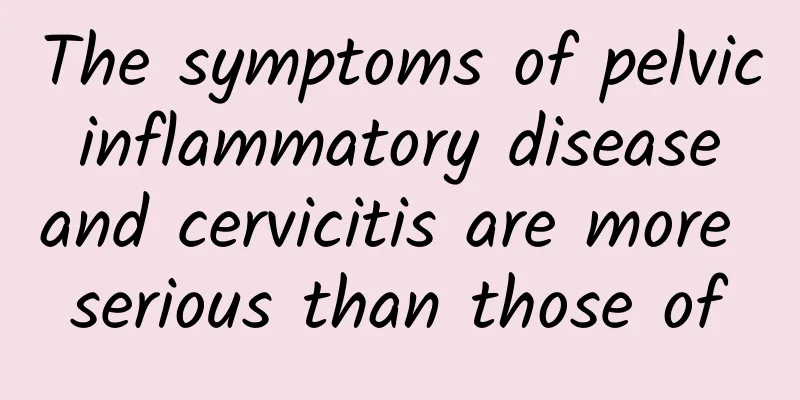Differences in the treatment of acute and chronic pelvic inflammatory disease

|
Inflammation of the female uterus, fallopian tubes, and ovaries can manifest as exudation, congestion, edema, etc. These symptoms are called pelvic inflammatory disease. Pelvic inflammatory disease is generally divided into two types: acute pelvic inflammatory disease and chronic pelvic inflammatory disease. Although both are pelvic inflammatory diseases, the treatment of acute pelvic inflammatory disease and chronic pelvic inflammatory disease is different. Treatment of acute pelvic inflammatory disease 1. Pay attention to rest: The main treatment for patients with acute pelvic inflammatory disease should pay attention to rest, and it is best to choose hospitalization. 2. Diet: Patients should pay attention to the balance of electrolytes and eat more high-protein nutritious foods, such as oats, lotus seeds, hazelnuts, soybeans, pumpkin seeds, pork liver, tofu skin, etc. 3. Use anti-inflammatory and antibacterial drugs: Patients with acute pelvic inflammatory disease should pay attention to replenishing fluids and use anti-inflammatory antibiotics. The most appropriate drugs can be selected through drug sensitivity tests. Patients should persist in taking the drugs and should not "stop halfway" to avoid chronic pelvic inflammatory disease. 4. Treatment combining traditional Chinese and Western medicine: Traditional Chinese medicine can select appropriate prescriptions for the treatment of acute pelvic inflammatory disease according to the patient's symptoms, and can achieve certain therapeutic effects in combination with Western medicine antibacterial drugs. Treatment of chronic pelvic inflammatory disease The treatment process of chronic pelvic inflammatory disease is usually longer, and patients should persist in treatment. They should never stop treatment if they feel that their symptoms have improved or disappeared. Chronic pelvic inflammatory disease is usually treated with a combination of traditional Chinese medicine, including oral administration of traditional Chinese medicine, intravenous drip of traditional Chinese medicine, enema of traditional Chinese medicine, acupuncture treatment, etc. |
<<: What are the treatments for cervical erosion?
>>: Will vulvar leukoplakia develop into vulvar cancer?
Recommend
What should I do if my vaginal discharge is like yogurt? Check it out in time
It is not normal for vaginal discharge to be like...
Does diffuse adenomyosis affect pregnancy?
Pregnancy is almost every woman's dream, so m...
Why do you feel cold during menstruation? It is mostly caused by iron deficiency.
Women usually have various problems during menstr...
Why is there no blood but only brown discharge during menstruation?
When there is no blood during menstruation, only ...
Experts will tell you what are the treatments for vulvar leukoplakia?
Vulvar leukoplakia brings great harm and pain to ...
Will cervical erosion cause bleeding? These 7 reasons can cause cervical erosion bleeding
In life, cervical erosion is a common gynecologic...
What is the conservative treatment method for ectopic pregnancy?
The treatment methods for ectopic pregnancy are o...
How is adnexitis diagnosed?
How to diagnose adnexitis? As one of the main gyn...
10 strategies to help you cope with the peak period of dinner parties
December begins with a series of year-end events,...
What is watery discharge after menopause?
Watery discharge after menopause may be a warning...
Can I drink tea if I have ovarian cysts? What are the treatments?
Can I drink tea if I have ovarian cysts? What are...
How to prevent cervical warts
Cervical condyloma acuminatum has a strong abilit...
The key to success in losing weight by eating tomatoes at night is... which one should you choose, big tomatoes or small tomatoes?
Pickled tomatoes are an indispensable side dish f...
Will there be pregnancy reactions in ectopic pregnancy?
Ectopic pregnancy, also known as ectopic pregnanc...
What is the best medication for vulvar itching?
There is no saying "what is the best drug to...









